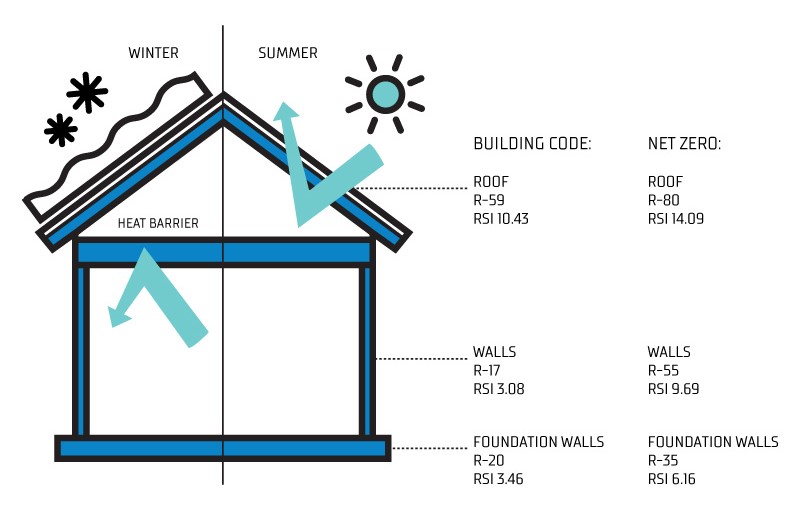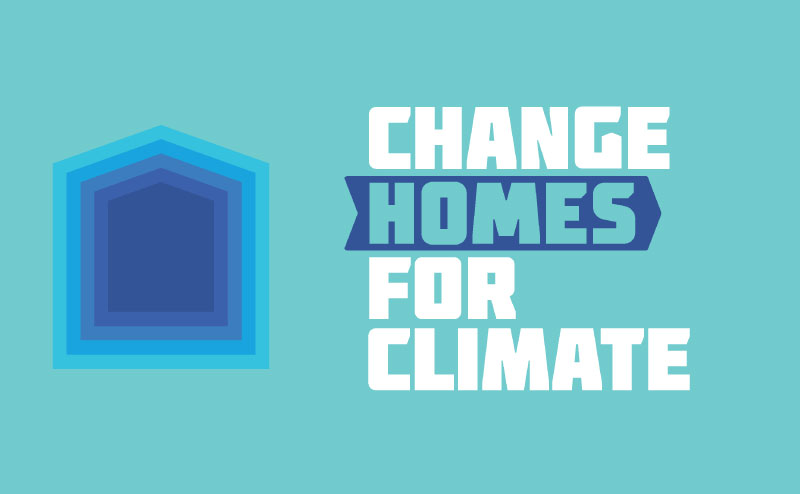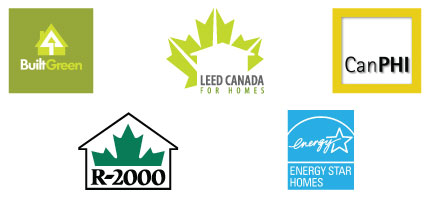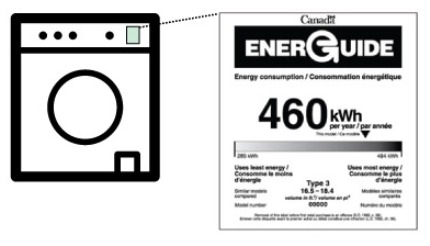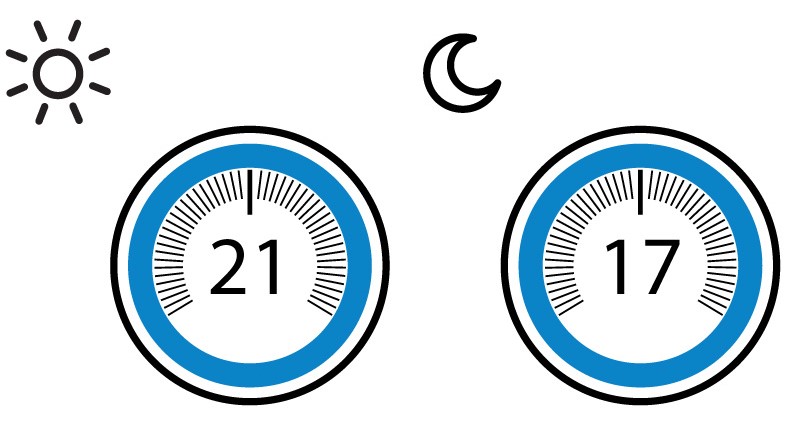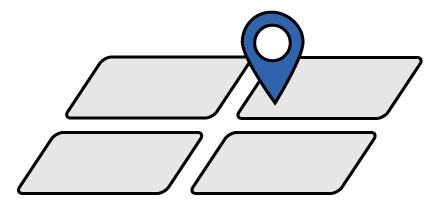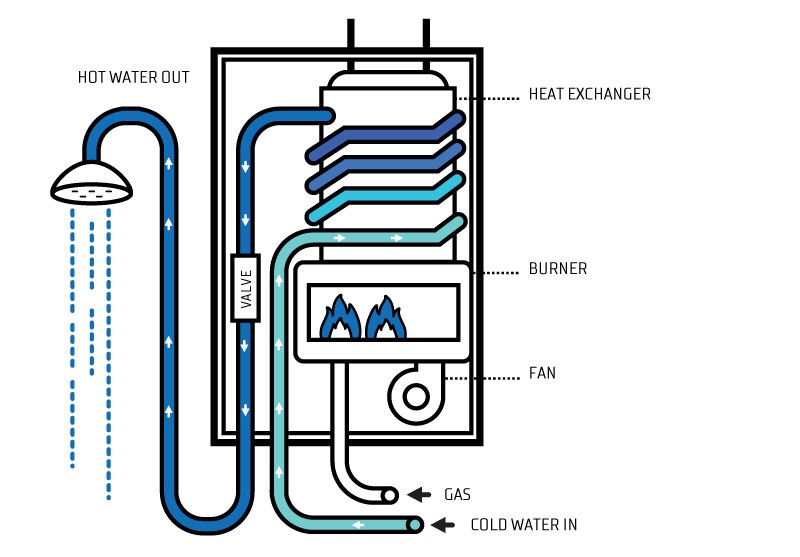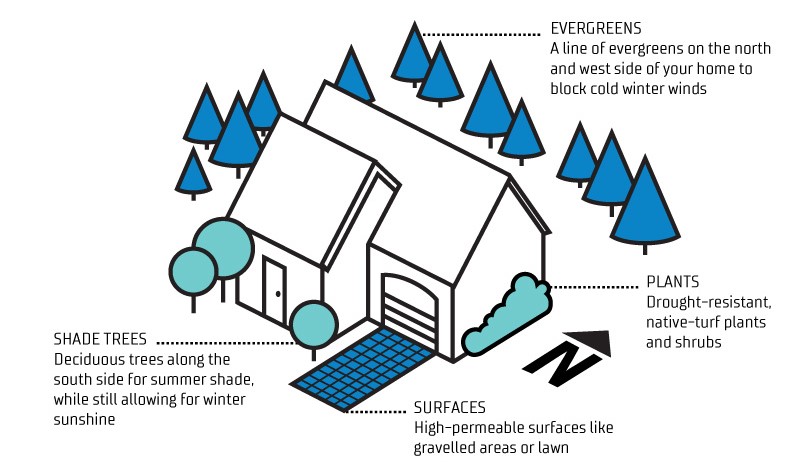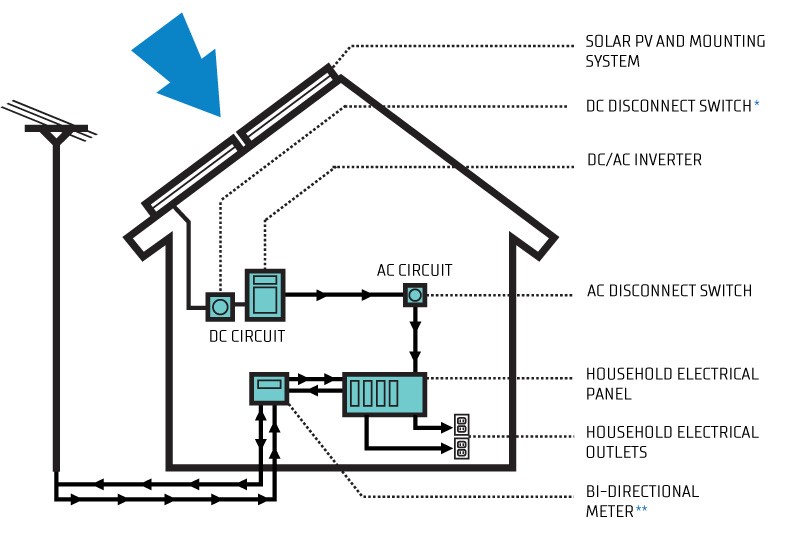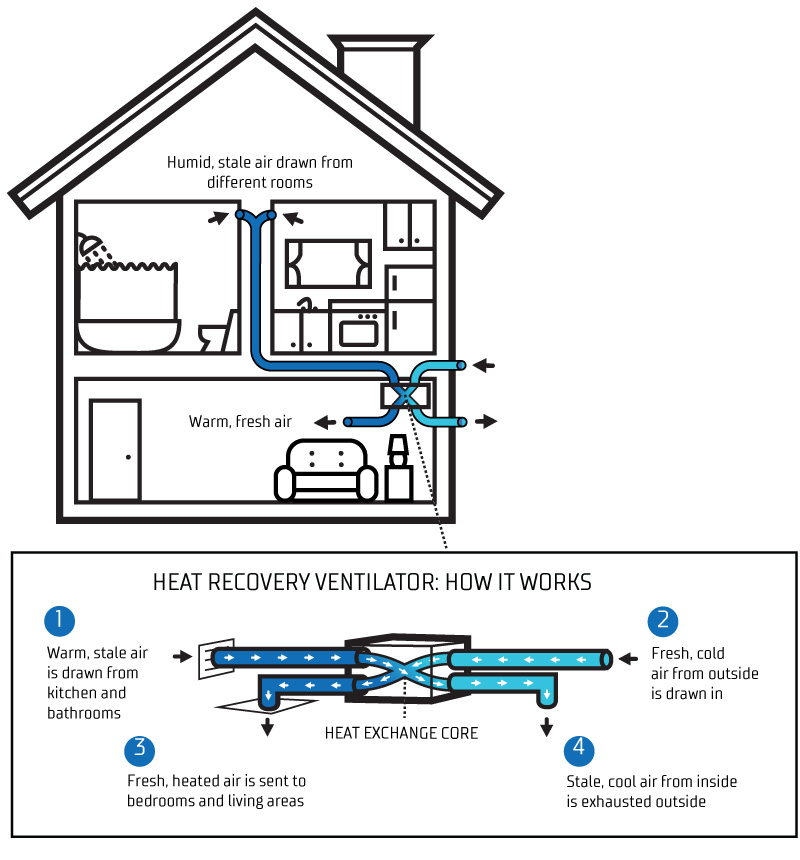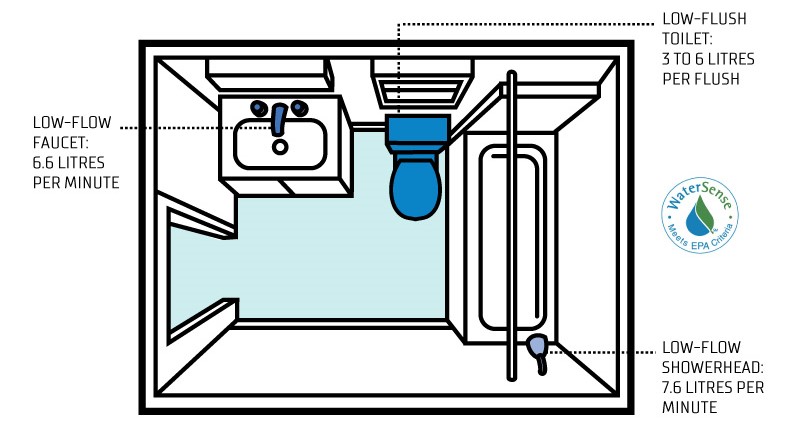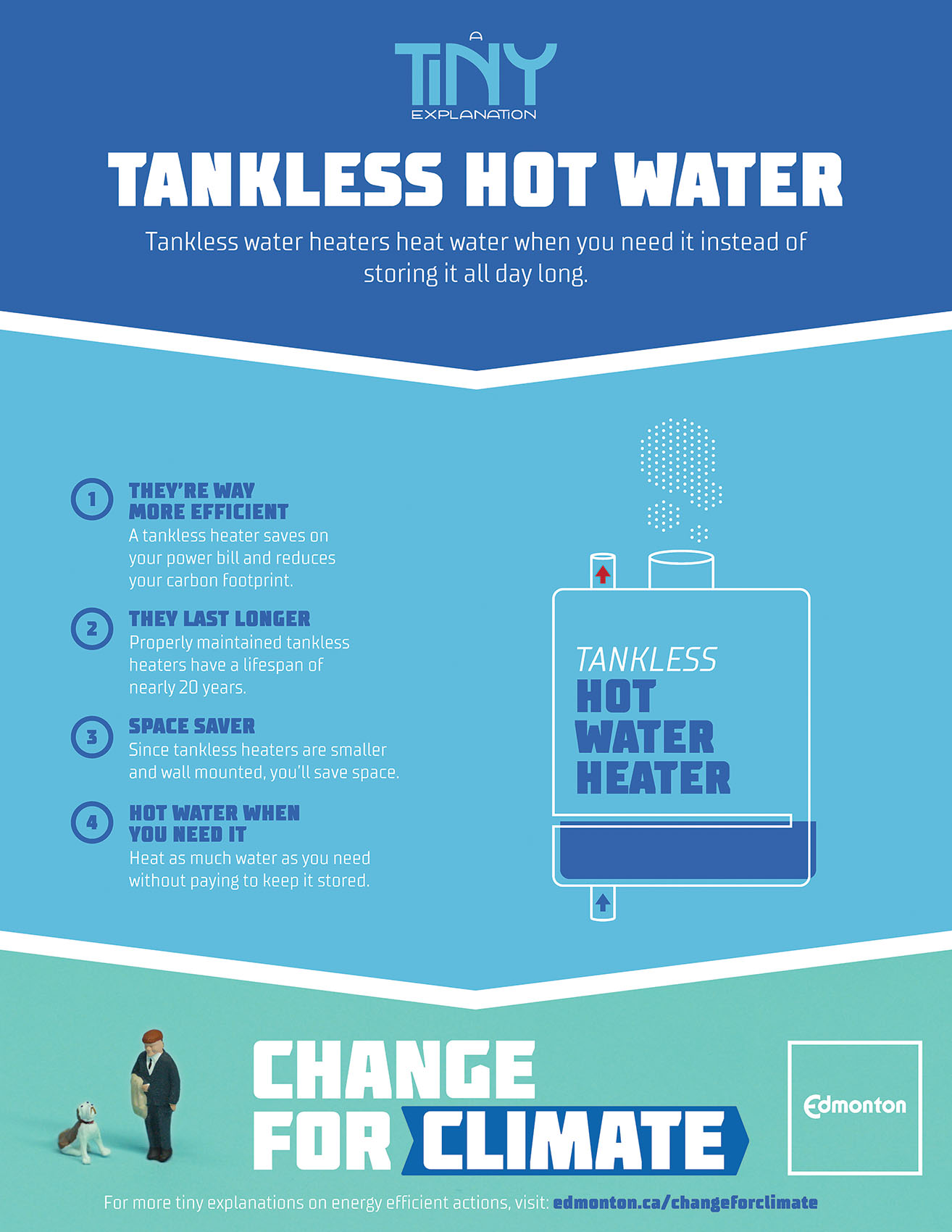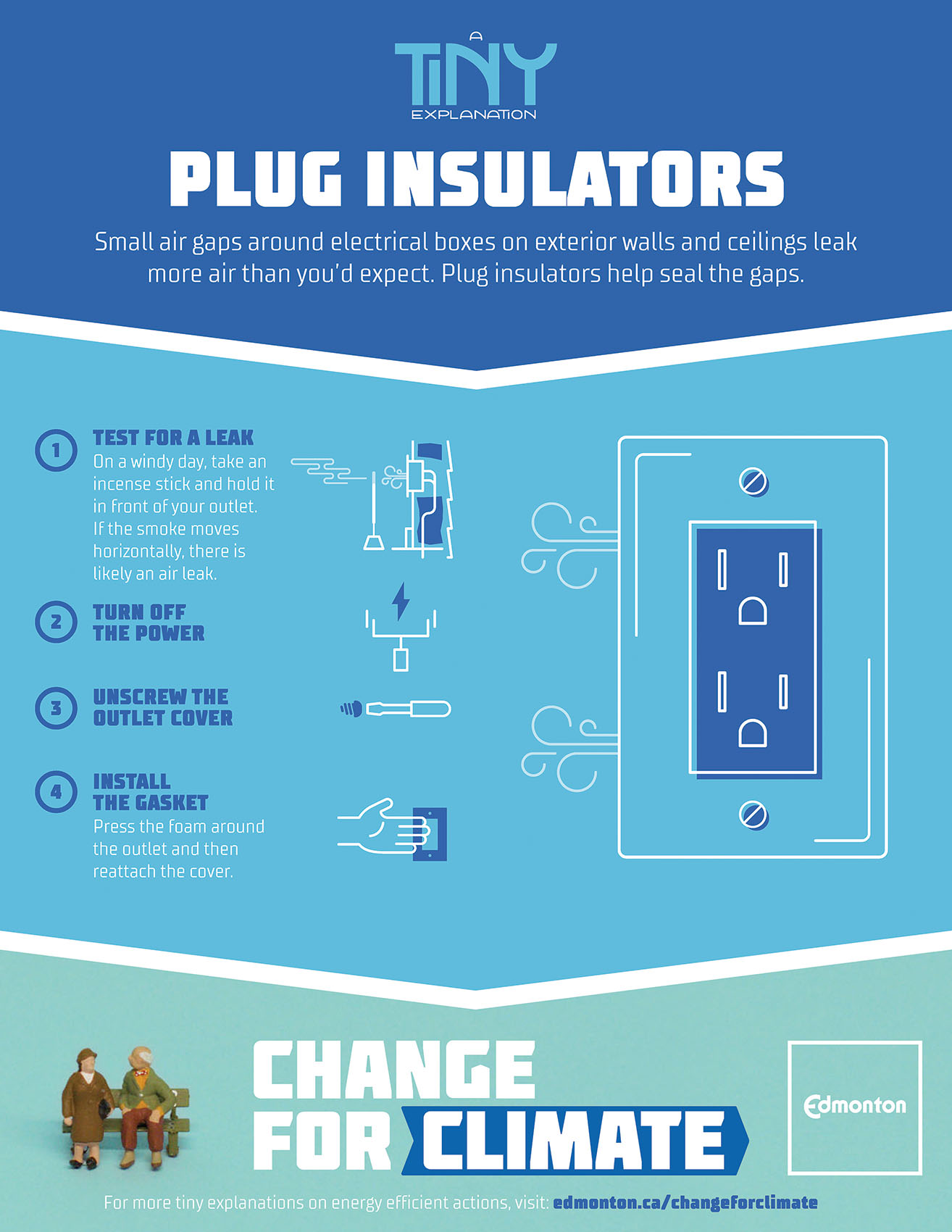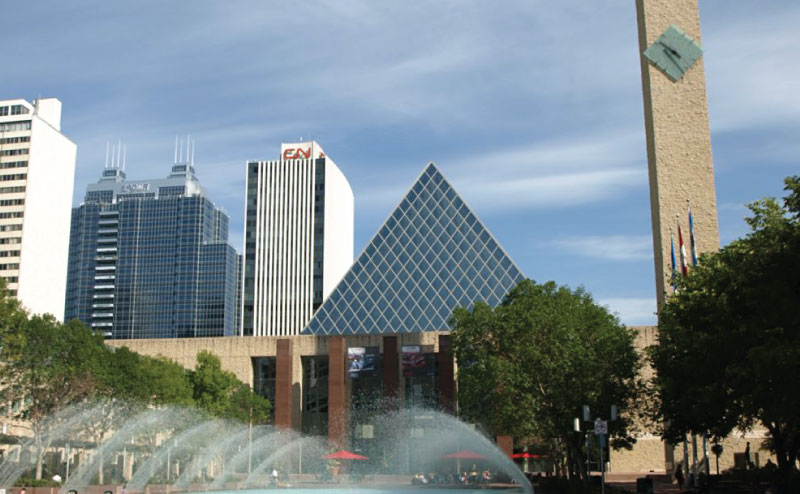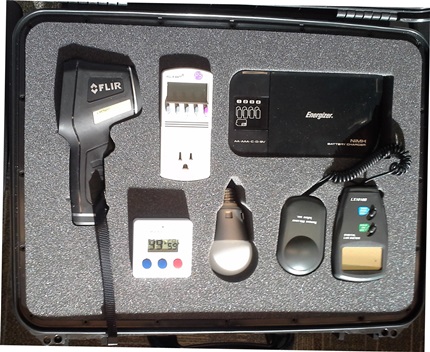Download a copy of the glossary
Annual Fuel Utilization Efficiency (AFUE):
AFUE is the measurement of the thermal efficiency of combustion equipment such as hot water heaters, furnaces, and boilers. A higher AFUE means a higher efficiency.
Biomass:
Vegetation, sewage, or agricultural waste used as a fuel or energy source.
Blower Door Test:
A test that measures airtightness in homes and small buildings. It can also be used to find the location of major air leaks. The equipment for the test includes: 1) a temporary door covering installed in an outside doorway; 2) fan that forces air into or out of the building; and 3) a pressure measurement instrument called a manometer to measure the pressure difference across the fan and the building envelope.
BUILT GREEN:
Built Green Canada® is a national, industry-driven organization committed to working with builders interested in responsible sustainability practices in the residential building sector. A BUILT GREEN® certified house includes a two-in-one label with both an EnerGuide label and the BUILT GREEN seal. The homes must be built by BUILT GREEN qualified builders.
Carbon Footprint:
The amount of carbon dioxide and other greenhouse gases emitted into the atmosphere from human activities such as the consumption of fossil fuels. In buildings, carbon is typically emitted from heating, cooling, electricity use (if the electricity is generated by fossil fuels), and hot water use.
Certified Energy Advisor (CEA):
A Certified Energy Advisor is an individual who has been trained and is recognized by Natural Resources Canada to conduct EnerGuide energy models for homes as well as air leakage (blower door) tests.
Climate Change Adaptation:
Actions that reduce the negative impacts, or take advantage of positive impacts of a changing climate. With expectations of sudden rainfalls that result in overland flooding, hotter summer temperatures, and increases in high winds and convective storms, it is important that one’s home and yard is prepared for gradual changes and projected weather extremes.
Climate Change Mitigation:
Actions taken to reduce greenhouse gas emissions. Reducing greenhouse gas emissions is expected to slow global temperature increases.
Cogeneration:
A combined heat and power plant uses an engine to generate power while simultaneously using the waste heat for heating purposes. Using the waste heat and creating electricity on-site makes the system more efficient than a traditional boiler paired with grid electricity. The systems are best suited for buildings that have a constant need for heat (otherwise the heat is wasted). Typically this application works better in larger commercial, institutional, or mixed use buildings than single family homes.
Condominium:
A multi-family building in which the suites in the building are individually owned and the owners pay a monthly fee to cover the operating costs of the building.
District Energy:
A district energy system centralizes heating and cooling energy generation and distributes this energy to an entire neighbourhood. District energy systems have traditionally used high temperature boiler plants that distribute high temperature water through insulated steel piping; this heat is then used directly at each building. More recently, lower temperature systems are being used which allow much easier tie-in of renewables and eliminate the need for boiler plants. A district energy system is installed on a community scale and not by single family home.
Drain Water Heat Recovery:
The use of a heat exchanger to recover energy and reuse drain water heat from various activities such as dishwashing, clothes washing, and especially showers. The technology reduces energy consumption for water heating and is also known as water heat recycling, drain-line heat exchange, or grey-water heat recovery.
Ecological Footprint:
A measure of the amount of biologically productive land necessary to supply the resources a human population consumes and to absorb the associated waste.
EnerGuide:
The official Government of Canada mark associated with the labelling and rating of the energy consumption or energy efficiency of specific products. EnerGuide™ labelling exists for appliances, heating and cooling equipment, houses, and vehicles.
Energy Rating (ER) for Windows:
The energy rating (ER) value is calculated using a formula that balances a product’s U-value with its potential solar heat gain coefficient (SHGC) and its airtightness. The higher the number, the more energy-efficient the product. ER values normally range from 0 to 50.
ENERGY STAR:
The international symbol of premium energy efficiency. Products that display the ENERGY STAR® symbol have been tested according to prescribed procedures and have been found to meet or exceed higher energy efficiency levels without compromising performance.
Environmental Product Declaration (EPD):
In life cycle assessment, an EPD is a standardized way of quantifying the environmental impact of a product or system. EPDs are independently verified and communicate transparent information about the life-cycle environmental impact of products. Having an EPD for a product does not imply that the declared product is environmentally superior to alternatives; rather, it is simply a transparent declaration of the life-cycle environmental impact.
Geoexchange:
Low-temperature earth energy commonly used for heating and cooling a building with a heat pump. The stable temperature of the earth just below the surface can be used as a heat source or sink to generate free earth-energy for a building.
Geothermal Energy:
Energy derived from the heat in the interior of the earth.
Greenhouse Effect:
The earth’s atmosphere acts somewhat like the glass of a greenhouse. Some incoming radiation from the sun is reflected directly back to space by the earth’s atmosphere and surface and some is absorbed by the atmosphere. The rest of the incoming radiation is absorbed by the earth’s oceans and land, where it’s converted into heat, warming the surface of the earth and the air above it. Particular gases in the atmosphere act like the glass of a greenhouse, preventing the heat from escaping. Without this natural greenhouse effect, the earth would be much colder—about 33°C colder—making the average temperature on the planet a freezing -18°C rather than the 15°C it is now.
Greenhouse Gases (GHGs):
Any of the gases whose absorption of solar radiation is responsible for the greenhouse effect, including carbon dioxide, methane, ozone, and the fluorocarbons.
Ground-Source Heat Pump (GSHP):
A central heating and/or cooling system that pumps heat to or from the ground. It uses the earth as a heat source in the winter, or a heat sink in the summer. This design takes advantage of the moderate temperatures in the ground to boost efficiency and reduce the operational costs of heating and cooling systems. Also known as a geoexchange system.
Heat Pump:
A heat pump is a mechanical system that extracts heat out of a cold space into a warmer one, such as out of the air or the ground and into a home. Heat pumps can also be used for cooling and typical examples of this are air conditioning units and refrigerators. The relative energy and cost savings for installing a heat pump depends on your heating system and the current cost of energy. By running a heat pump you will use less natural gas, but you will use more electricity to run the pump.
Heat Recovery Ventilator (HRV):
A fully ducted system that delivers fresh-filtered outside air into the house, while moving stale air out. As the fresh air passes the stale air (in separate chambers), the heat from the hot stale air is passed to the cool fresh air, pre-warming it before it is heated. This action reduces the amount of energy it takes to heat the home.
Hydronic Heating:
A heating system that transfers heat by circulating a fluid through a closed system of pipes.
Leadership in Energy and Environmental Design (LEED):
A third-party certification program and an internationally accepted benchmark for the design, construction, and operation of high-performance green buildings, homes, and neighbourhoods. The program is administered in Canada by the Canada Green Building Council (CaGBC).
LEED Canada for Homes:
Leadership in Energy and Environmental Design® (LEED) has several programs for certifying buildings based on building type. LEED Canada for Homes certifies single-family homes, townhomes, and even low-rise multi-family houses up to 3 levels high. Certification requires on-site inspection and third party verification meaning certifications are based on what is actually constructed.
Living Building Challenge (LBC):
LBC™ is one of the most difficult programs to gain certification under as it has the most stringent requirements, including requirements to achieve net zero energy and water. LBC has seven performance categories, or “Petals”, which are further divided into twenty “Imperatives” that can be applied to almost any building type, scale, or location. The overarching Petals include Place, Water, Energy, Health and Happiness, Materials, Equity, and Beauty.
Location Efficiency:
A term that describes how easily you can access work, shopping, entertainment, parks, and other amenities from your home, either by walking or through the use of transit. If the location of your home results in easier walks, shorter car trips, and faster access to transit, it’s generally considered a more efficient location.
Low-Emissivity (Low-E) Coating:
The coating put on glass to reduce its thermal (heat) emissivity (loss). Low-E-coated windows can provide greater thermal efficiency (insulation properties) than regular windows.
Multi-Family Building:
Under the EnerGuide program, a multi-family building is defined as any building that has four or more levels or storeys, and where 50% or more of the floor area is residential.
Native Plants:
Native plants are species indigenous to a certain geographical area, meaning they thrive in that climate. Native plants are relatively unaffected by drought, wind, and extremes in temperature, and are particularly helpful for Edmonton’s short prairie growing season.
Net-Zero Home:
A home that produces at least as much energy on-site from a renewable source as it uses on an annual basis.
On-Demand Hot Water Heater:
On-demand or tankless hot water heaters can be between 19% and 53% more energy-efficient than conventional storage tank water heaters; however they typically cost more to install. The greatest potential improvements are in homes that use the least hot water—typical hot water heaters continually use energy to heat water all day long even when not being used.
Passive Design:
Passive design is key to green building design. It’s an approach that maximizes the use of free, renewable sources of energy such as sun and wind to provide household heating, cooling, ventilation, and lighting. This reduces or removes the need for mechanical heating or cooling. Using passive design can reduce temperature changes, improve indoor air quality, and make a home drier and more enjoyable to live in. (Passive design is also called passive solar design.)
Photovoltaic (PV) Panels:
Specially designed panels that convert solar energy into electricity as an alternative to getting power from the electrical utility grid. Also called solar panels.
R-2000:
Operated by the Natural Resources Canada (NRCan) Office of Energy Efficiency, R-2000 is a voluntary standard for new homes which demands a high level of energy efficiency, typically beyond what building codes require.
Radon:
Radon is an odourless radioactive gas that occurs naturally in the environment and can accumulate within homes. It arises from the breakdown of uranium, which is a common trace element in some natural geologic materials such as granite, shale, or phosphate minerals. Radon has been connected to serious health issues and is the second leading cause of lung cancer in Canada, with 1,900 Canadians dying each year due to exposure to high levels of radon. Radon is present across Canada.
Red List:
Red list chemicals are the chemicals and compounds that are known to have the worst health effects. These chemicals can be found in all products including various building materials. Look for products that do not contain these worst-in-class chemicals and compounds.
RSI:
RSI stands for “R-value Système International,” meaning it measures the R-value of an insulating material, but uses the international metric system of units. Converting one to the other requires some simple math: R-value (US) = RSI multiplied by 5.678263337 or RSI (SI) = R-value multiplied by 0.1761101838.
R-Value (Insulation):
R-value, which stands for "resistance value", provides a means for quantifying the thermal resistance of an insulating material. It is a measure of thermal resistance used in the building and construction industry. Thermal resistance is a measure of a temperature difference by which an object or material resists a heat flow—the higher the R-value, the more effectively the insulation resists the transfer of heat (that is, less heat escapes your home in the winter and less heat enters your home in the summer). If the R-value is low, the material is a poor insulator.
Single-Family Home:
Under the EnerGuide program, a single-family home includes the following building types: fully detached house, duplex, triplex, fourplex, row house, or low-rise multi-family building no more than three storeys high and in which over 50% of the floor area is residential.
Solar Gain:
The increase in temperature in a space, object, or structure that results from solar radiation. The amount of solar gain increases with the strength of the sun and with the ability of any intervening material to transmit or resist the solar rays. This concept is also referred to as solar heat gain or passive solar gain.
Solar Heat Gain Coefficient (SHGC):
The number to know when selecting windows, doors, and skylights. It’s a measure of how much of the sun’s heat is transmitted through those fixtures, expressed in a number from 0 to 1. A window that has a SHGC of 0.3 allows 30% of the sun’s heat to pass through. Whether you want a higher or lower number depends on your goal: a product with a low SHGC helps block heat and reduce cooling loads in hot weather; a product with a high SHGC is more effective at harnessing solar heat in cold weather.
U-Value:
The heat transfer coefficient that describes how well a building element conducts heat. It measures the rate of heat transfer through a building element over a given area under standardized conditions. The usual standard is at a temperature gradient of 24°C, at 50% humidity, with no wind. A smaller U-value is better at reducing heat transfer. A value of 0.33 is a good benchmark for a double-paned, argon-filled window.
Walk Score:
A large-scale, public access walkability index that assigns a numerical walkability score to any address in Canada. The final score gives you a general idea of how walkable your area is by analyzing how close common, everyday amenities like grocery stores, transit stops and shopping malls are to your home.
WaterSense:
WaterSense®, a partnership program developed by the U.S. Environmental Protection Agency, seeks to reduce water usage by offering people a simple way to use less water with water-efficient products, new homes, and services. Products and services that have earned the WaterSense label have been certified to be at least 20% more efficient without sacrificing performance.
Window-To-Wall Ratio:
The proportion of the building facade area that has glass compared to solid wall provides a benchmark of the thermal performance of the building envelope as a whole. Generally, the larger the window area, the more energy that’s required to heat the building.
